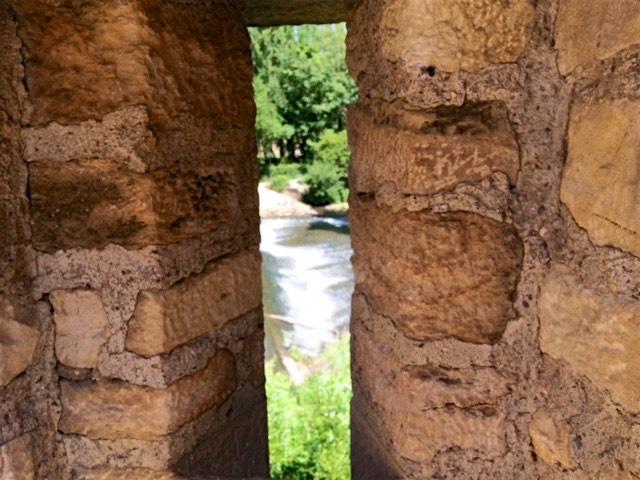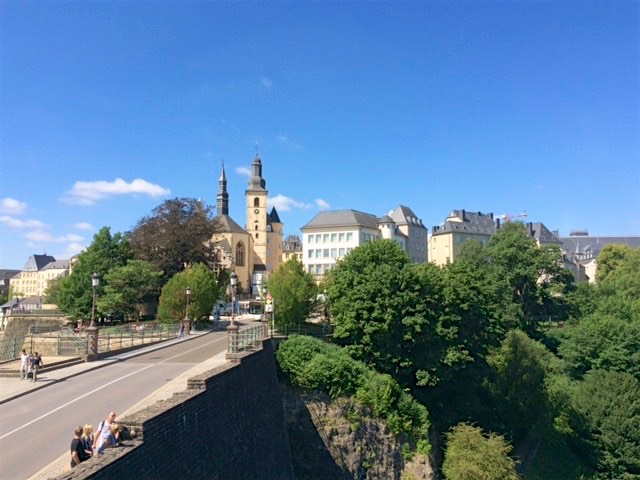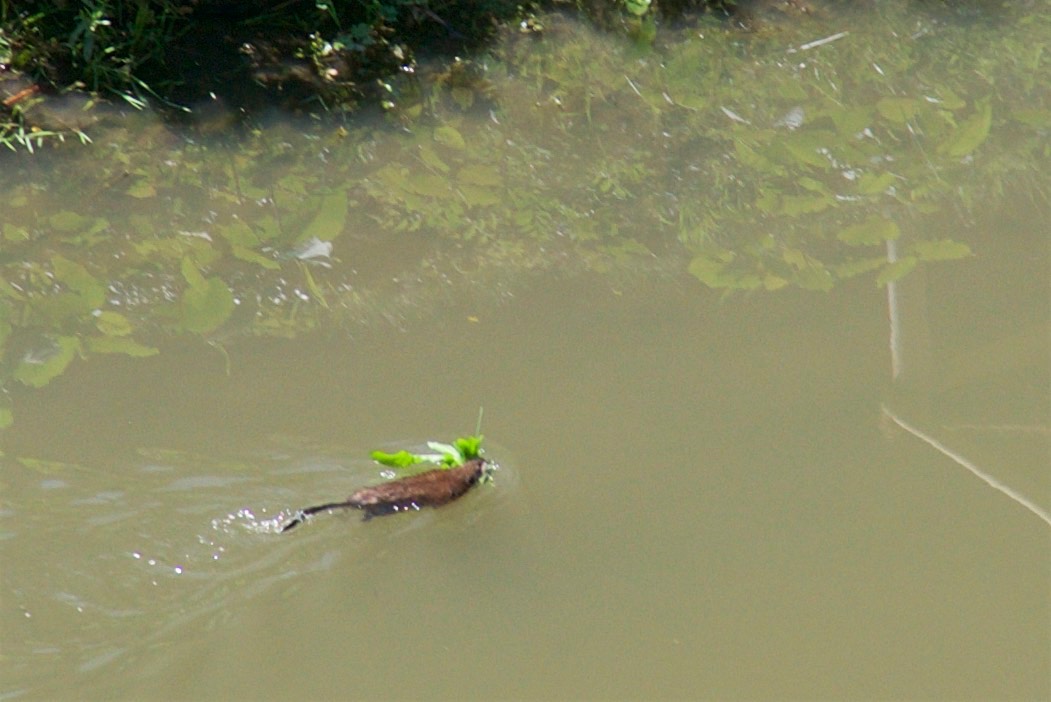I must admit, before today’s trip, I had absolutely no idea what Luxembourg’s attractions were or even what it looked like.
Following our visit, I can say I was very pleasantly surprised.
Our visit started early today. We rode the Métro to Paris-Gare du L’Est station where we boarded a French TGV (Train de Gran Vitesse) train to Luxembourg. When we arrived, we first went to the tourist information center, something we generally avoid, but in this case it was necessary since we had no tour guide and no idea what to see and do while we were there.
Our first stop was the Cathedral de Notre-Dame de Luxembourg, slightly less well-known than the Parisian cathedral that bears the same name. The cathedral is beautiful, with soaring ceilings and maginificent stained-glass windows. Beneath the church is the crypt, which houses the tombs of several members of the royal family.
The City of Luxembourg was founded in 973 AD and centered around a powerful fortress, once nicknamed the “Gibraltar of the North.” In addition to the towers and gates, the fortress also housed an immense network of casemates, or tunnels built directly in to the mountain fortifications of the fortress.
The fortress itself was destroyed in the 20th century, but the network of tunnels remains. At various times, they have been used for evacuation, storage, defense, and, during World War II, a bomb shelter. They are now open to visitors.
Luxembourg is divided into two parts: the Upper City or Centre, the newer (but still very old) section of the city, and the Lower City or Grund, which dates back to early medeival times. They are separated by huge, towering cliffs. The only way to get from one section to the other is via an elevator built into the rock.
Luxembourg is unique among old European cities because its town center is surrounded by magnificent natural beauty. Trees, vineyards, and canals surround the medieval-era dwellings and churches, all nestled within the confines of the towering cliffsides and the towers of the old fortress.
This old aqueduct, dating back to medieval times, has been converted into railroad tracks.
L’Eglise de St. Michel (The Church of St. Michael) overlooking the medieval town and canal.

Looking through the window of the fortress’ lower gatehouse at the old canal.
We didn’t visit many museums or monuments today, but the ambience of walking around Luxembourg was truly unique. Luxembourg’s unique look and feel is difficult to explain in text, so brace yourself for an onslaught of photographs.
Luxembourg’s airport is a major cargo hub for European freight carriers. The flight path for all incoming planes is directly over the old city. Here, the old and the new: a Cargolux 747 soars over the buildings of Luxembourg-Centre.
Houses perched atop the monolithic, soaring walls of the old fortress.
Vineyards built into the setbacks and contours of the city’s old walls.
Openings in the rock allow light and air into the casemates, while a guard tower stands sentry over the old city’s canal.

A bridge spanning the canyon housing the old city. This used to be the only entrance into the Upper City of Luxembourg.

A beaver swims in the canal.
In the tunnels beneath the fortress.
Luxembourg was awesome! I loved the architecture, the natural beauty, the unique culture and ambience of the city. I hope someday I can come back and experience more of this amazing city.
- Hayden M. Strong